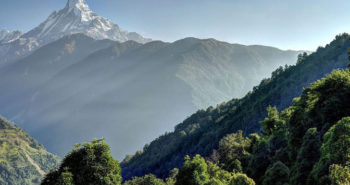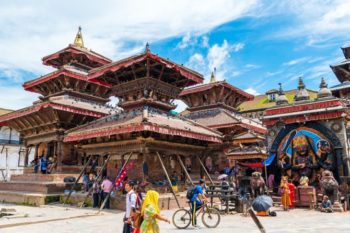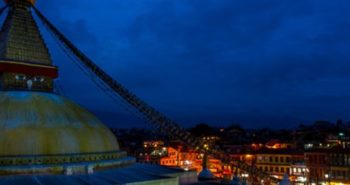Gosainkunda Trek Costs
Gosaikunda is the nearest trekking route from Kathmandu which is quite affordable and the moderate trek. With an amount of $350- $500 you can meet the Gosaikunda Trek Costs and have an enjoyable trek. In this article, you will read how much you have to spend on personnel costs, insurance costs, food, accommodation, guides, porters, etc.
Many trekkers also choose to combine Helambu Gosainkunda with Langtang trek to get the best of Langtang region in one trek. But, the costs for the combine trek is more than the costs of Gosainkunda trek. Because you will spend more days on the trail which will increase the costs.
Gosainkunda Trek Costs
The total Gosainkunda trek costs range from $350-$500. It depends on the services you pick for your trekking packages. Here is the detailed description of all the factors that affect your total costs.
Personal Costs
For any trek preparation, there are some personal costs that you will have to pay for. These are subjective costs and depend on your personal choices.
Clothing and Equipment Costs
These costs can be high or low depending on your personal belongings. If you already have enough clothes that will survive you on the trek, you do not need to spend a lot on it. As for your trekking equipment, you can either buy or rent them. There are reasonable stores in Thamel that give equipment for a cheap price.
Transportation to The Starting Point of The Trail
For Gosainkunda trek, your starting point is Dhunche. You can ride to Dhunche on a local bus or jeep. If you choose the local bus, they charge you $10. Whereas, traveling in jeeps will cost you $200.
Insurance Costs
It is a good idea to get an insurance before you travel anywhere. There are many risks such as flight cancellation, delays, luggage loss, accidents, emergencies, etc. on the trail.
Your insurance usually covers all these risks. It also provides helicopter evacuation up to an altitude of 6000 m. Travel insurances usually last for 30 days and cost $150.
Cost of Permits
There are two permits required for Gosainkunda trek. One is the TIMS card and the other is the Langtang National Park Entry Permit.
TIMS Card
TIMS is a paper card that carries all information about the trekkers. If you are a solo trekker, you will have to pay $20 for your green TIMS card. The blue card, which costs $10, is for individual trekkers. SAARC nationals only have to pay $6 for their pink TIMS card.
You can get your TIMS card from:
- Nepal Tourism Board in Kathmandu or Pokhara
- Trekkers’ Agencies Association of Nepal (TAAN)
- Dhunche
Update:
Due to decentralization, basic rights regarding the permits depends on the local authorities in Nepal. So, from October 1, 2017, TIMS card is no longer needed for Everest Base Camp Trek.
You can get a Local Area Permit from Lukla which costs $20 for both organized and individual foreign trekkers.
This initiation is now in practice in other trekking zones in Nepal. In Langtang region, this has come to practice from October 2018. For your Gosainkunda trek, you can get the local permit from Dhunche. You no longer need TIMS card for this trek.
Langtang National Park Entry Permit
Gosainkunda lies inside the Langtang National Park area. So, you have to get a permit to trek in this area. It is available at Nepal Tourism Board in Kathmandu or at the entry point in Dhunche.
If you are a foreign national, Langtang National Park Entry Permit costs $30. For SAARC Nationals it costs only around $15. These prices are excluding the 13% VAT.
Please do get both these permits from Nepal Tourism Board or at the starting point of your trail. If you trek without these permits, you will have to buy them on spot and pay fines.
We can help you get these permits. Drop by with a photocopy of your passport and two passport-sized photographs. We will meet all the legal procedures for the trek.
Seasons of Your Trek
The best time for Gosainkunda trek is Spring and Autumn. But, during these seasons the trek can be expensive. The reason for so is that you cannot bargain prices for food and accommodation during this time. The trail has many trekkers so you will have to pay the prices quoted on the menu. Also, renting the trekking equipment may also cost you more than in offseasons.
Itinerary Plan
You can complete Gosainkunda trek in 5-6 days. If you spend extra days, you will have to spend more on food, accommodation, guides, porters, etc. So, as you spend longer on the trail, the cost of your trek increases.
Accommodation Choices
In Kathmandu, you will find different accommodation types ranging from basic to 5-star hotels. They usually charge from $5-$150 or more depending on the type of room you choose. You can opt for a decent hotel to stay for $50 per night here.
In lower regions like Dhunche, there are different types of accommodation. At higher altitudes, expect basic and comfortable rooms. Your rooms will only have a bed (with a quality timber bed base) and foam mattresses, blankets, pillows, etc.
The accommodation costs during peak seasons may range from $12-$15. During off seasons, these charges may drop up to $3-$5. Usually, teahouses charge you less for accommodations if you take a meal there.
In lower altitudes, you can get a single room if you pay extra. But, in high altitudes, you might not get a single room even though you are ready to pay charges. You might have to share a room with your fellow trekkers because as you ascend higher the choice of accommodation gets limited.
If you plan to trek in peak seasons, please do make your booking beforehand. Since there are a lot of trekkers during this season, you might not get a place to stay without reservations. We can help you with your accommodations for your trek.
Food and Drinks Preferences
There are many food and drink options that the teahouses offer. Both alcoholic and non-alcoholic beverages are available on the trek.
During the trek, you may get to enjoy Dal Bhat, macaroni, noodles, pancakes, chapatis etc. You can find milk tea, black tea, ginger tea, hot lemon, coffee, milk coffee etc. in the drinks menu.
The cost of food in lower altitudes may range from $2-$3 but in higher altitudes, it can increase up to $5-$6. Bottled water in the lower regions costs $0.25-$1 whereas in higher regions it may cost $3.5. Even snacks such as granolas, chocolates, etc. cost $5 or more near the mountains. This is because there are no roads up to the mountains. Mules or helicopters have to transport the goods up to these regions.
To save some money, carry nuts and snacks with you. You can also carry water purifying tablets. Fill your bottle from natural resources and purify them.
Cost of Guides and Porters
A guide helps you find your way in the mountains, help you communicate with locals and manages your accommodation and meals. They also help you find proper accommodations. Usually, a guide charges $20- $25 per day.
A porter will carry your luggage on the trekking trails to your destination and back. This will help you walk easily on the trail. They usually cost you $15- $20 per day.
Miscellaneous Costs
Other than the costs above, there are some other miscellaneous costs that you might have to pay for on your trek.
- You might tip your guide and porter after paying them their fixed charges. Tipping is not mandatory but it is customary and expected.
- You may buy souvenirs from mountains on the trail for your friends and family back home. There is also a cheese factory on the way. You can buy some cheese for yourself as well.
- In higher altitudes, you may have to pay for wifi, to charge phones and batteries. If you wish to take these services, you will have to pay $2-$5 for them.
Tips to Lessen Your Gosainkunda Trek Costs
There is always a way to save money on your trek. Here are a few tips that will help you along your trail.
- Carry snacks like chocolates, granola bars, nuts, etc. on your trek. They provide you with energy while you walk on the trail. And they are quite cheap in Kathmandu but as you go higher on the trail, you will experience the rise in their price.
- Instead of buying bottled water on the trail, carry some water purifying tablets. You can fill your water bottle from the natural resources, purify it and then drink it.
- If you are fond of tea, carry tea bags. You will then only have to pay for hot water and can make your own tea.
- Instead of paying for charging services, carry your own power bank or solar charger. This will save you a lot of money.
- You can eat local rice, lentils, vegetable curry to save money on food. It is nutritious and cheap as well.
You can complete Gosainkunda trek in a short time and limited budget. The trek is worth every penny and effort you spend on the trail. The majestic view of the lake surrounded by a valley is a treat to the eyes.


